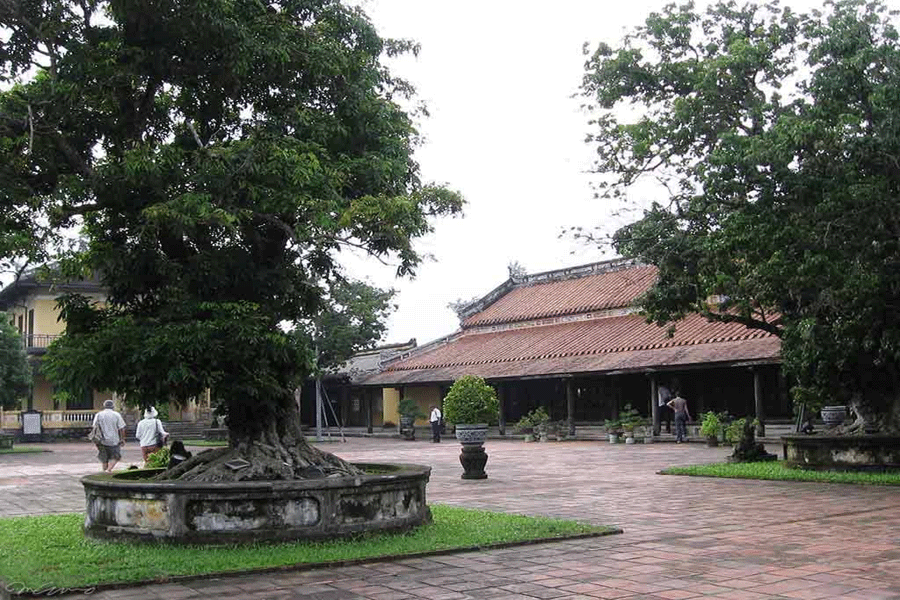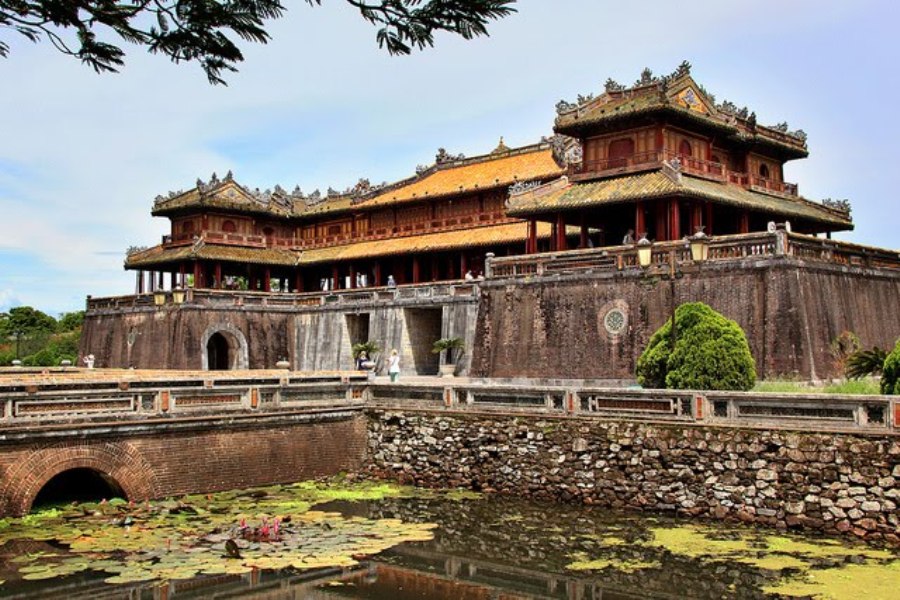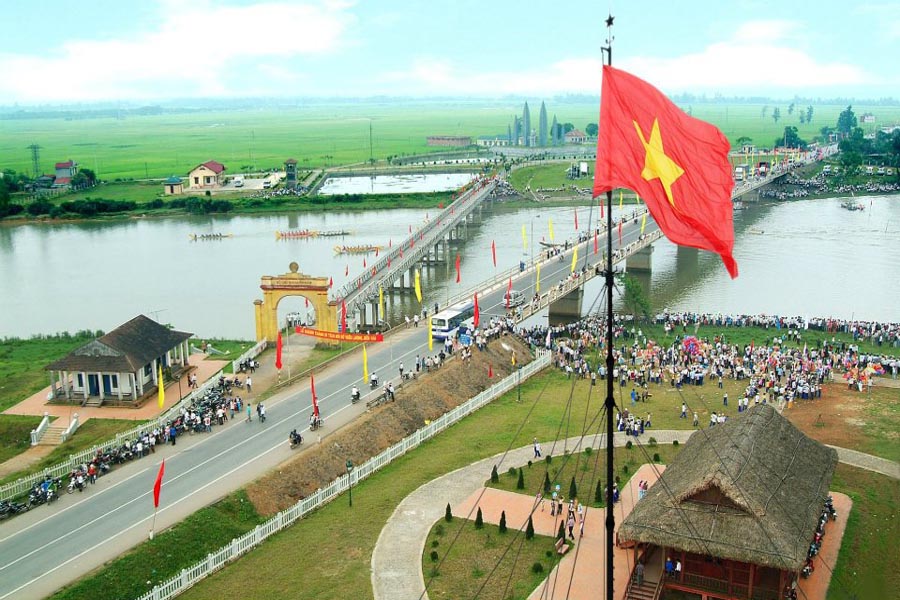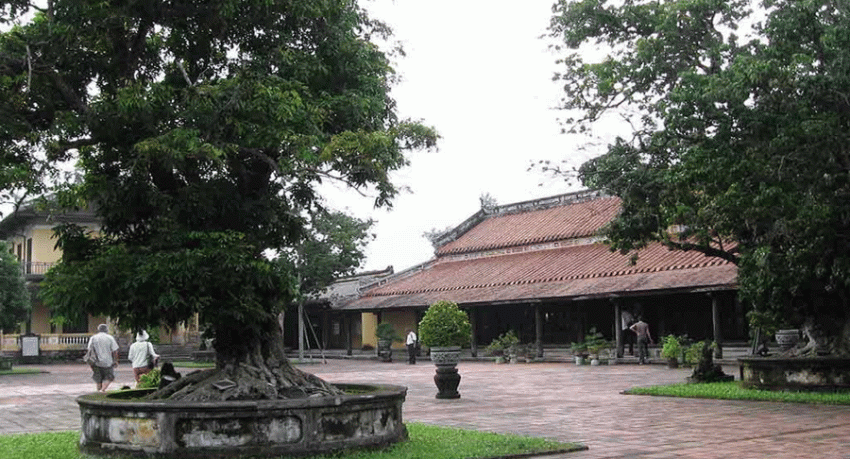Quoc Tu Giam was the insutitution formerly organized by the imperial court to train scholars to sever the feudaism. In our country, the first Quoc Tu Giam was founded in 1076 in the capital Thang Long. When the Nguyen dynasty was set up and chose Hue its capital, Quoc Tu Giam was established in Hue and worked until the last years of the Nguyen dynasty. In Gia Long’s time, together with the construction of Van Mieu (Temple of Letters) beyond Linh Mu pagoda, Quoc Tu Giam was also erected there, though the school was still simple. in Minh Mang’s time, the number of students increased to meet the school was more and more renovated and enlarged to meet the requirements of training mandarins for the regime. In 1821, Di Luan pavilion and lecture halls and three rows of hose on either sides for students’ accommodation were constructed. In 1825 the school was renovated; a row of 20 apartments with tile roof on either side, a brick wall surrounding the three faces of the school were erected (according to Dai Nam Thuc Luc).

When visiting the school, emperors Thieu Tri and Tu Duc composed poems to praise the learning atmosphere of students and to encourage everyone. These poems were inscribed on the stele in the front of the school.
The school was far away from the capital so the transport route was rather inconvenient, therefore in 1908, the Nguyen dynasty moved it to the left of the citadel (the present museum area). This time the school was built on a flat large surface, divided into two areas by the present Le Truc street. Between the two main areas (front) is Di Luan pavilion. Between the subsidiary areas (back) is Tang Tho Vien (the library). On either side behind Di Luan pavilion are two rows of classroom. On both sides of the front yard are two rows of dormitory. n both sides of Tang Tho Vien are two houses for Temple Tuu mandarin (Rector) and Tu Nghiep mandarin (vice-rector). Furtherfore, there are some houses for teachers. Most of these contructions are now still preserved.
Di Luan pavilion is a woden house with great value of architecture and decoration. Most of the wooden items were engraved very elbourately and inscribed many poems composed by the emperors together with other ancient pictures following “nhat thi nhat hoa” (one poem one picture) model. The students were selected into the institution from many classes and areas in the whole country. They were royal family members (Ton Sinh), mandarins of springs (Am Sinh), intelligent and good-looking students (hoc sinh) and “thay tu” – the successful candidates in “huong” exminations and wanted to study for bachelor or doctor degrees. All were called “Giam Sinh” (students of national institution). these students were subsidized scholarship to covert all expenses such as food, oil and lamp, official uniform and accomdaton. Its regulation was to award to encourage studious and punish to train lazy ones.
Similiar to the prior dynasties, the early Ngyen dynasty had the cirriculum consisting of ancient books of cinfuciancism (Tu Thu, Ngu Kinh), chinese history, Vietnam history, chinese literature. The students were also taught Gia Long’s laws, way to write poems, odes, decrees books, ect. There was fist no limit for time to study: the students studied here until they passed the examination or worked for the imperial court. Later on, the time of study was fixed to three years. For the fist years of the XXth century, the cirriculum were much changed, science subjects such as mathematics, physics, chemistry, biology, literature, french, Vietnamese were tought in stead of other former literary subjects. In 1914, a gymnasium was built for to do exercises.
Quoc Tu Giam in Hue is the only feudal institution which remains in our country. It is a valuable historical and cultural relic. To visit the institution tourists will understand more about anthor aspectof the Nguyen dynasty’s activities in particular and of Vietnamese feudalism in general.
Copyright by Phong Nha Pioneer Travel
Categories: Blog





